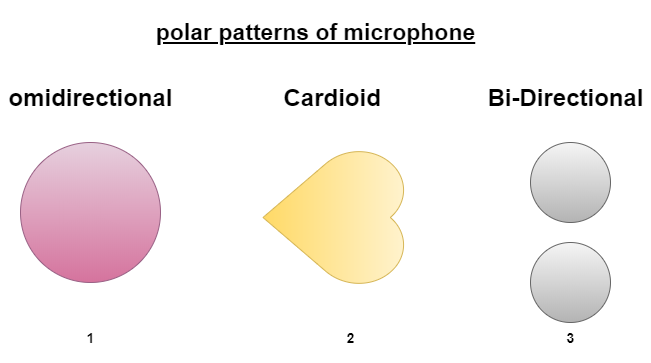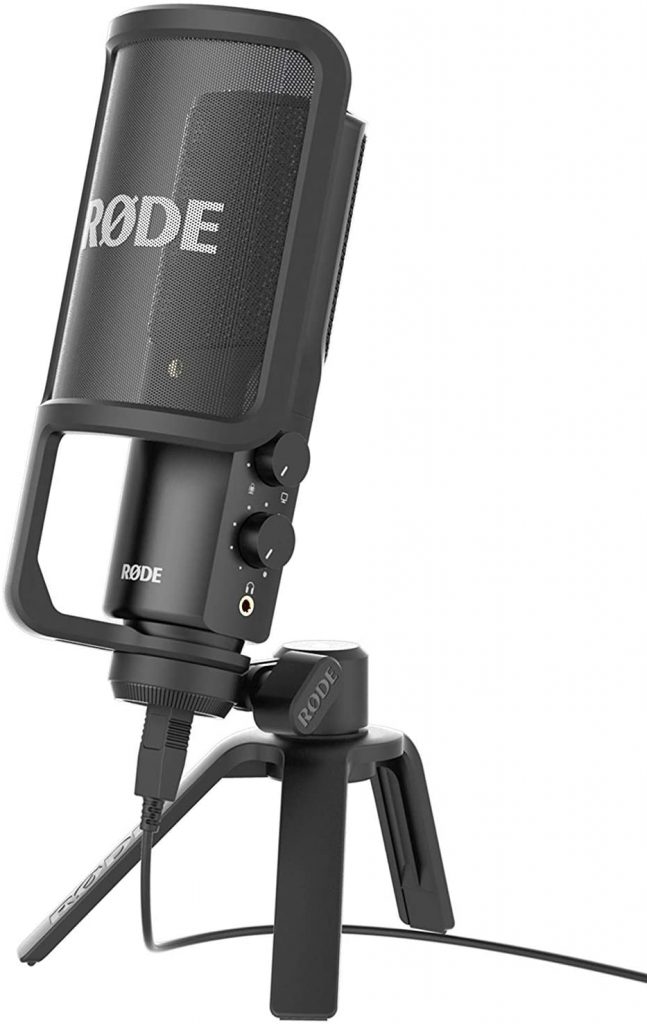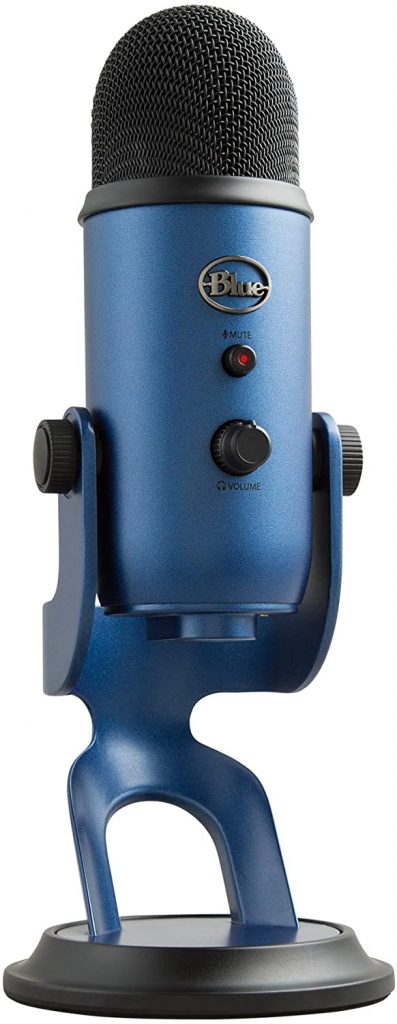If you are serious about podcasting you have to invest in a microphone. You engage your users through your audio experience and you need to ensure that it is of high quality. Not only that for any quality audio work you need to invest in a good microphone. Be it voice over for your videos or even stream sessions.
People usually relate good audio quality to expensive gear but you can get some great audio quality with affordable options as well. Here we compare the Rode NT USB and the Blue Yeti to see which is the best.
Table of Contents
Overview of Rode NT USB Vs Blue Yeti USB Mic
The Blue Yeti and the Rode NT USB are both powered by USB bus meaning that setting them up is as easy as plugging them into an USB port. Both the Blue Yeti and the Rode NT mics have support for both Windows and Mac operating systems. The Rode NT USB mic also has compatibility with an iPad , so even if you have a remote setup you have a mic that can travel with you on the go. These mics also come with a warranty, with the Blue Yeti having a one year warranty and the Rode NT USB coming with a two year warranty.
Physical Overview of Rode NT USB Vs Blue Yeti USB Mic
If you have a smaller setup and are looking for a more compact mic then we suggest you look towards the Rode NT. This is because it has a smaller form factor compared to the Blue Yeti. Having a smaller form factor also means that it weighs less than the Blue Yeti..The Rode NT comes in around a pound on the scale.
If you are more of a streamer and the look of your mic needs to match your setup we suggest you to opt for the Blue Yeti USB mic. It comes in a range of colour options such as blue ,red, maroon,white, and also multi colour variants.
Both these mics come with zero latency headphone jacks and can be mounted on any custom made stand. However the Rode NT USB mic does come with a mount.
One of the main differentiating points is that the Blue Yeti does not come with a Pop filter whereas the Rode NT USB mic does. A pop filter enhances the sound clarity by eliminating the high sounds that come from speaking into a microphone.
There are however many inexpensive alternatives to this so it isn’t a deal breaker.
Sound Overview of Rode NT USB vs Blue Yeti USB Mic
These mics are condenser mics and produce studio level audio quality. Condenser mics also provide for a larger frequency range. Being a condenser mic it means that they are tuned for vocals making them a good fit for podcasts or voice Overs. They are also tuned for acoustic instruments making those streaming sessions with your friends on YouTube a jam!
This does however make both the mics sensitive to background noises and also secondary interferences coming from outside.
So if your main focus is on the vocals then these mics will be a good option.
Feature Comparison of Rode NT USB vs Blue Yeti USB Mic
Both these mics produce good audio but have a few extra features to differentiate them from the competition. The Blue Yeti brings a lot of useful features to the table when compared to the Rode NT USB mic.
The Blue Yeti USB mic has two main features namely the mute button and the gain control.
The mute button is a very essential feature to have in our opinion as it makes recording sessions easier, especially when you do not have full control of your surroundings.
Some users did however report that the Blue Yeti mic at times auto mutes itself. This can be very annoying if you are, say using it to record an interview, but the problem is not all that common.
The gain control knob is also an excellent feature allowing us to adjust the audio output on the go directly from the microphone.
Another feature that makes the Blue Yeti versatile is the fact that it has multiple recording modes or patterns. The Blue Yeti offers omnidirectional, bidirectional, stereo, and cardioid modes. The Rode NT USB mic on the other hand only offers a singular mode or recording pattern.
Here is a simple graphic to show the difference between the modes or patterns.

Omnidirectional
In this recording mode the mic picks up or in other words becomes sensitive to noise coming from a certain radius around in an equal manner. So if you have a group of people sitting around a table and if the mic is placed between them in the center, all the voices of the participants will be heard equally.
Bidirectional
In this recording pattern the mic picks by the sounds from two opposite directions. Meaning that any sounds coming from the front or the back of the mic are picked up while the ones coming from the sides are ignored. This is usually used in the case of interviews where only the voice of the interviewee and the interviewer needs to be captured.
Cardioid
This recording patterns prominantly picks up the sound from the front of the microphone while being less sensitive to the sounds from the side and completely ignoring sounds from the back. This pattern comes in handy when you have a group of people speaking from the front of the mic, maybe in the case of a singer or bands playing music.
These modes allow the Blue Yeti mic to capture audio in a multitude of different situations without having to pick up any unwanted disturbances.
But one major feature the Blue Yeti missed out and one that the Rode NT USB mic has is the that of an on/off button. This means that the only way to turn the Blue Yeti on and off will be to plug it into the USB port and remove it from the USB port which is highly inconvenient.
Audio Quality
Now both these mics have different features making it better for different purposes so choosing one of the mics will come down to the use case. Both mics in general have good enough hardware to pick up clean noise but users have complained that the audio picked up can be little muffled in the case of the Rode NT when the speaker is a little far away.
The Blue Yeti USB mic on the other hand has received complaints saying that it picks up a lot of surrounding noise making the output undesirable. This can however be controlled if we keep the recording environment in check but in most cases this is not a feasible option.
The sound output in both the mics is the same at 16bit so as long as the mics are in a conducive environment for recording the sound clarity and output should sound similar.
Final Thoughts
Both these mics are a great upgrade from any normal mic that comes bundled with your phone or even a lavalier mic. They produce studio level audio output with a multitude of features allowing it to adapt to different situations.
It finally does come down to use case, if you are looking for a mic for your podcast or gaming channel then the Rode NT mic will do you just fine, it also costs less than the Blue Yeti option.
The Blue yeti on the other hand has a multitude of options making it suitable for different use cases but also comes in as a bit more expensive than the Rode NT USB mic.
But our recommendation would be to go for the Blue Yeti microphone even though it is a costlier option because of its many features making it versatile. But if you have a mobile setup and use an iPad as your workstation we recommend you go for the Rode NT because of the inbuilt support for the device.
Hope this review helps you can check out the Rode NT USB mic here and the Blue Yeti USB mic here.



